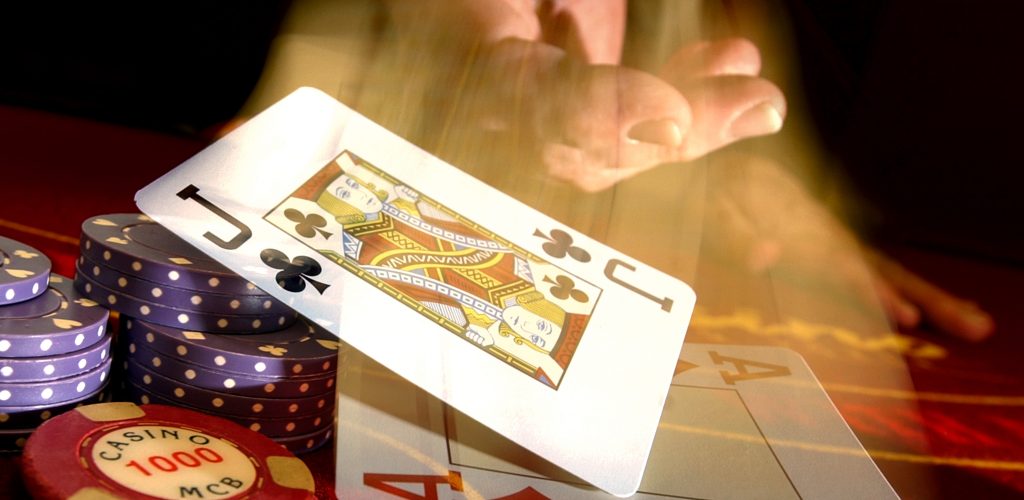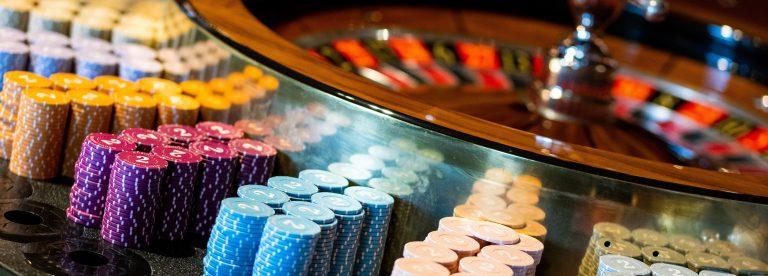Casino
Poker Odds and Outs

In poker, knowing the odds of the outcomes before and during a game can make a big difference to your chances of winning. Some of the best poker players just happen to be good at maths, or at least have a good memory when it comes to remembering the odds for certain situations.
Introducing Poker odds and ‘outs’.
There will be many times during a game of Hold’Em Poker that you’ll need a certain card to come out on the flop, the turn or the river to make a strong or even a winning hand. Knowing the odds of a winning card coming next gives you a huge advantage, as you’ll be able to bet more to win the pot or bow out and wait for a better hand – or bluff your way to victory.
This sounds difficult but knowing poker odds isn’t as complicated as you might think. You only really need to know two things:
- The number of unseen cards
- How many ‘out’ cards you have
What Are ‘Out’ Cards?
‘Out’ cards are the number of cards that can make your hand a good one. For example, if you’re chasing a flush on the river, there are nine cards that can help you.
It’s about knowing what’s already out, and what’s to come. In the example above, we know there are 13 heart cards in a deck, and there are four on the table, then there are 9 cards that can help you ‘out’.
Unseen Cards
The other requirement you need to know is the number of unseen cards that there are. As there are already two cards in your hand, and before the river there are another four cards on the board, there are 46 cards remaining out of the 52-card deck.
How to calculate pot odds
Calculating equity in poker is the first step to understanding pot odds. Equity is your chance of winning the pot, given a certain hand. It’s calculated by looking at the amount of money in the pot and comparing it to the amount it would cost you to stay in the hand. If the pot is worth more than what it would cost you to stay in the hand, then you have positive equity.
Counting your outs
Your outs are the number of cards left in the deck that will give you a winning hand. For example, if you have a pair of Aces and are looking for another Ace to complete your set, then you have two outs. This means that there are two Aces left in the deck that will give you a winning hand.
Antiouts
In addition to counting your own outs, you also need to be aware of antiouts. Antiouts are cards that could help your opponent win instead of you. For example, if your opponent has two Aces and you have one, then an Ace on the board would be an antiout since it would give them a winning hand.
Blockers
Blockers are cards that reduce the number of outs your opponent has. For example, if you have a Jack and your opponent has a Queen, then having a Jack on the board would reduce their chances of making a straight. Knowing how many blockers you have can help you calculate pot odds more accurately.
Implied odds
Implied odds take into account not only the amount of money already in the pot, but also how much you expect to win if you hit your hand. This can be difficult to calculate accurately, but knowing implied odds can help you decide whether to call a bet with a drawing hand.
By understanding how to calculate pot odds, you can make better decisions about when to stay in a hand and when to fold. Knowing your equity and counting your outs, antiouts, blockers and implied odds can give you an edge over your opponents.
Quick poker odds
Draw | Outs | Next card | Turn or River |
Four of a kind | 1 | 2.1% | 4.3% |
three of a kind | 2 | 4.3% | 8.4% |
High pair | 3 | 6.4% | 12.5% |
Insight straight draw | 4 | 8.5% | 16.5% |
Two pair or three of a kind | 5 | 10.6% | 20.3% |
Any pair with your holding | 6 | 12.8% | 24.1% |
Insight straight or high pair | 7 | 14.9% | 27.8% |
Open-ended straight draw | 8 | 17% | 31.5% |
Flush draw | 9 | 19.2% | 35% |
Inside straight or a pair | 10 | 21.3% | 38.4% |
Open-ended straight or high pair | 11 | 23.4% | 41.7% |
Flush or high pair | 12 | 25.5% | 45% |
Flush or high pair | 13 | 27.7% | 48.1% |
Open-ended straight or a pair | 14 | 29.8% | 51.1% |
Flush or open-ended straight | 15 | 31.9% | 54.1% |
Flush or open-ended straight | 16 | 34% | 57% |
Flush or open-ended straight | 17 | 36.2% | 59.8% |
Flush, inside straight or a pair | 18 | 38.3% | 62.4% |
Flush, inside straight or a pair | 19 | 40.4% | 65% |
Flush, inside straight or a pair | 20 | 42.6% | 67.5% |
Flush, open-ended straight or pair | 21 | 44.7% | 70% |
The 4,2 Rule
If you can’t remember the above odds, there is a simple rule that gives the approximate percentage on both the turn and the river – the 4,2 Rule.
The numbers relate to the odds on both the turn and the river. To calculate the odds of hitting a card on the turn or river, you need to multiply the number of outs you have by four. To calculate the odds of hitting a card on the river, you need to times the number of outs you have by two.
Although not 100% accurate, these quick calculations give a rough guide when it comes to the odds of getting a card that you need.
Let’s have a look at the flush example, where you have nine outs to hit. The chance of hitting this on the turn or river is 4 x 9, which is 36%. If it still doesn’t appear on the turn, the chance of hitting it on the river is 2 x 9 which is 18%.
What Are Pot Odds?
Another question that always pops up during poker is ‘should I stay in the hand or fold?’. Using pot odds you can calculate the odds and make the right decision.
Pot odds are the ratio between what there is currently in the pot and the amount that you have to bet in order to stay in the hand you are playing. As an example: if there is £30 in the pot and you have to bet £6, then your pot odds are 5-1 (30 to 6).
Play poker online with William Hill
Want to hone your poker skills and odds knowledge even further? Then look no further than William Hill Vegas! We’ve got a huge range of Texas Hold’em, Omaha, Stud, and other poker games where you can test your poker know-how and maybe win big!
William Hill offers a great variety of ways to play poker with plenty of tournaments, tables, and cash games.







